How does an Electric Car work ? | Tesla Model S
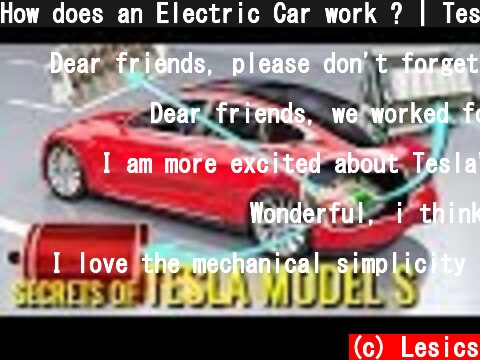
(c) Lesics Electric cars are making big waves in the automobile world. These noise-free, pollution-free and high-performance vehicles are …
Dear friends, please don’t forget to support us at www.Patreon.com/LearnEngineering . Your support keeps us going !
Dear friends, we worked for 7 long months behind this video, with scripting , 3D modeling, rendering and video editing. I thank all our patrons from the bottom of my heart for making this video possible. Without their support we could not have sustained such a big project. Please consider supporting us at Patron.https://www.patreon.com/LearnEngineering
I am more excited about Tesla’s future than my own
Wonderful, i think can all of this change the world in the future? We have to wait and watch it!
I love the mechanical simplicity of these cars. Less messy. That being said, I’m not sure how more friendly to amateur repair it is, compared to ICE’s.I just hope there will be a market for elegant and affordable electric vehicles soon, especially interior wise. I’m not interested in autonomous vehicles and all-touch screen infotainment systems are costly to manufacture, repair and are stupidly complex, imo. You could drop retail price by at least 5 grand by removing autonomous function and simplifying dashboard and infotainment by not compromising interior material quality.
The work that went into this video is almost as impressive as the design of the car
Impressive technology! I learned quite a bit from watching this video. Thanks.
Well, as we said in one of our videos: “If we are to go on Mars, for sure we’ll be driving Teslas there as well” :)) Thanks for the great video.
Never viewed this video before today and surprised I missed it. Really nice clear presentation with superb graphics.Just got a LR 3 a couple of months back and have enjoyed driving a superior vehicle. There’s just nothing to dislike with this car!
Great video explanation but AI and deep learning also involved in this car which ensure the battery’s efficiency and three phases motor in max. torque. But not limited to autopilot or it’s failsafe system.
Great video!
Very nice video, professional animations! Is there an reason why EV should cost more than fuel vehicles in the future? Let’s consider without batteries.
Wonderful explanation : I learned a lot ! One Question: How about if each wheel is activated with an electric induction motor. It could overcome the ABS system of conventionally cars and finally manage better control of traction and also overcoming the differential gear ?
This is a great video, really explains the concept of electric cars well. Thanks!
I literally learned more about how engines work in this video than I did during my entire education. WTF.
The thing I am concerned about is the availability of charging stations and the time it takes to recharge a battery.
Excellent Video Sir! A question appeared watching a second time. In an electric vehicle if you press the acceleration pedal down to its maximum, will the car accelerate until it reaches its maximum velocity? So does the range of the whole pedal represents the whole speed range of the car? Or does it only reaches from for example 0-100 mph and when you press it further so for a longer time on its maximum it will accelerate further?Thank you very much!
Excellent video! The information and detail of the images are very well achieved
I have just loved this tutor, I repeated it 4 times just feel the content of this engineering ,, wow wow! It’s more than a semester course
Very interesting and excellently realized video. Many thanks!As a passive safety engineer myself, I would like to add that the presence of the battery pack increases the torsional stiffness for sure, but not so much for lateral impact safety (the battery structure must be protected, thus the intrussions are to be managed via the body-in-white rocker structure mainly).Also for the front unit crumple zone, yes, it is largely increased (if a front motor does not exist), but in counterpart, the rear crumple zone is more difficult to manage comapred to an ICE car (the rear motor and invertor must be protected in the case of rear impact).Thanks again, hope my comments would be accepted as constructive opinion. No intention of critisism.
Automatic Transmission, How it works ?

(c) Lesics Help us to make future videos for you. Make LE’s efforts sustainable. Please support us at Patreon.com …
After 68 times of watching; I think i finally understand 2nd gear.
When they say “it’s not Rocket science”, they really mean to say “it’s not an automatic Transmission”.
After this I went and read some rocketscience to relax
Some kid in my freshman engineering class made a full working miniature Lego car. Working electric engine, complete with working Lego power windows, and a full complete lego automatic transmission. Took him about 2 and a half years to complete. The guy was absolutely insane.
Honestly on a base level, the concept of an automatic transmission was not that hard to learn; it just really starts to get complicated when you introduce more gear combinations. So it makes sense that a 2 speed automatic transmission on my gas powered r/c car is (relatively) not complex compared to a 6-speed + reverse car transmission, I guess I also understand why my r/c car does not have a form of reverse gear while the electric r/c cars have them
Me: trying to understandNarrator: *Adds another clutchpack and planetary gear set*Me: Blue screen of death
Honestly, I’ve never met an automatic transmission mechanic that wasn’t a meth addict.And, I’ve never had any problems with the work that they have done.
“If you want to achieve six gear, just remove C1 and add C4″oh so basically im gonna turn my car into a bomb
Great animation, I never knew why it was named ‘planetary’ and how it worked, this made the basic concept very clear. I’d like to see how a computer controlled gear shift works on a 6 speed transmission.
Clear as usual. Thanks a lot! Yours is by far one of the best engineering channels I’ve ever seen.
*For anyone struggling to understand:*_First watch the video and try to understand where parts are and how they interact and come back to this comment if you have questions._(I’ll be referring to each part as P1, P2, P3, P4, and P5. C1 acts on P1, C2 acts on P2, C3 acts on P3, C4 acts on P4, and C5 acts on P5)P1 is the Hub and caseP2 is the P4 planet carrier and clutch moduleP3 is the first set of gears (ring gear, planet gears, and sun gear) and the P4 planet carrierP4 is the second set of gears (ring gear, planet gears, and sun gear) and the P5 planet carrierP5 is the third set of gears (ring gear, planet gears, and sun gear) and the output shaftIn this type of automatic transmission the clutch packs are always in contact with whatever they’re meant to engage with they’re just allowed to spin freely.This creates friction between any parts in contact with the clutch packs which is why manual transmission systems are generally more fuel efficient.When the clutch packs are engaged they are no longer able to spin freely to induce a lot more friction in turn stopping what they’re engaged to.For example:The C1 clutch is connected to the hub (gear) on the end of the input shaft and the case on the intermediate shaft.When disengaged the C1 clutch will be able to spin freely without imparting much of any force on the intermediate shaft.When engaged the C1 clutch increases friction with the hub to essentially extend the hub to the case and apply force to the intermediate shaft.This lets the input shaft turn the intermediate shaft directly as long as the C1 clutch is engaged.*For the first, seconds, third, and fourth gear:*The C1 clutch pack engages to turn the intermediate shaft as explained above. The intermediate shaft is only connected to P4 and P5 sun gears so C1 only affects P4 and P5.*First gear:*First gear uses P1 and P5C1 and C5 engage in first gear.C1 engages because the intermediate shaft is only turned when C1 is engaged.This means that the sun gear in P5 is only turned when C1 is engaged.A problem arises however, if we only engage C1 we’ll also be turning the sun gear in P4 which can turn the P5 planet carrier/ring gear.To combat this C5 is also engaged.This “connects” the P5 ring gear to the transmission case.The transmission case is stationary so when C1 engages it stops the ring gear from being able to turn.So C1 engages to supply force to the P4 and P5 sun gear.C5 engages to stop the P4 sun gear from turning the P5 ring gear.*Second gear:*Second gear uses P1 and P4.C1 and C4 engage in second gear.C1 engages because the intermediate shaft is only turned when C1 is engaged.This means that the sun gears in P4 and P5 are turned only when C1 is engaged.When the P5 sun gear turns, it only turns the P5 planet gears.When the P4 sun gear turns, it turns the P4 planet gears however these are connected to the P5 planet carrier.This means that the P4 planet gears increase the speed the P5 ring gear.This leads to the planet gears turning more quickly than in first gear.This increases the output shaft turn speed.A problem arises when we don’t engage C4.The P3 sun gear isn’t connected to the intermediate shaft but instead connected to the input shaft.This means that the P3 sun gear turns at any point the engine is supplying force.The P3 planet gears turn the P4 planet carrier at the same rate as the input shaft, this would be 1:1 input:output which would require too much force from the engine.This would result in the engine stalling (Results in a jump from first gear to fourth gear)To combat this, the C4 clutch is engaged.The C4 clutch “connects” the P4 ring gear to the gear set case.This means that C4 stops P3 from supplying force to the output shaft.So C1 engages to supply force to the P4 and P5 sun gears.C4 engages to stop the P3 sun gear from turning the P4 planet carrier (prevents a jump to fourth gear).*Third gear:*Third gear uses P1 and P3.C1 and C3 engage in third gear.C1 engages to turn P4 and P5 sun gears.The P3 sun gear connects directly to the clutch module which is in turn connected to the input shaft.This means that the P3 sun gear is turning as long as the engine is supplying force.A problem arises when C3 isn’t engaged.The P3 ring gear is only connected to C3 and the P3 ring gears.When the P3 sun gear turns while C3 isn’t engaged it would turn the P4 planet carrier.This means that they will enter fourth gear resulting in engine strain/stalling.When C3 is engaged, the P3 ring gear remains stationary slowing the P4 ring gear.This means that the force supplied to the output shaft is decreased.So C1 engages to supply force to the P4 and P5 sun gears.C3 engages to reduce torque required from the engine (prevents a jump to fourth gear).*Fourth gear:*Fourth gear uses P1 and P2.C1 and C2 engage in fourth gear.C1 engages to turn the P4 and P5 sun gears.P2 is connected to the clutch module and the P1 planet carrierWhen C2 is engaged, P2 turns at the same rate as the input shaft.This results in the ring gear and sun gear of P5 turning at the same rate.This means that the input and output shaft turn at the same speed.If C2 is not engaged you would remain in fourth gear but it requires more force to turn the output shaft which is less efficient.This is because P3 is connected to the input shaft.So C1 engages to supply force to the P5 sun gear.C2 engages to supply direct force to the P5 ring gear.*Fifth gear:*Fifth gear uses C2 and C3.C2 engages to turn the P4 planet carrier.C3 engages to stop the P3 ring gear.With C1 disengaged the intermediate shaft can rotate independently of the input shaft.When C3 is engaged it prevents entering fourth gear and supplies the P4 ring gear with force.This results in a greater turn rate at the output shaft.So C2 engages to supply force to the P4 planet carrier.C3 engages to supply force to the P4 planet carrier and prevent fourth gear.*Sixth gear:*Sixth gear uses C2 and C4.C2 engages to turn the P4 planet carrierC4 engages to stop the P4 ring gear.With C1 disengaged the intermediate shaft can rotate independently of the input shaft.When C4 is engaged it prevents entering fourth gear and supplies the P4 planet carrier with force.This results in a greater turn rate at the output shaft than fifth gear because it requires more torque to move the input shaft.So C2 engages to supply force to the P4 planet carrier.C4 engages to stop the P4 ring gear and prevent fourth gear.*Reverse gear:*Reverse gear uses C3 and C5.Force is supplied to the intermediate shaft through P3.C3 is used to stop the P3 ring gear to prevent counter rotation from P4/friction.This allows the P3 planet gears to revolve around the P3 sun gear.This results in the P4 ring gear turning in the same direction of the input shaft.The P4 ring gear will cause the P4 planet gears to rotate in the same direction.The P4 sun gear will rotate in the opposite direction of the planet gears.This results in the intermediate shaft having opposite rotation to the input shaft. C5 is used to stop the P4 ring gear to prevent counter rotation from the output shaft/friction. This allows the P5 planet gears to revolve around the P5 sun gear.The P5 sun gear rotates in the opposite way to the input shaft.The P5 planet gears revolve around the P5 sun gear in the same direction it rotates.This supplies a force to the output shaft that is opposite the force supplied to the input shaft.So C3 allows P3 to rotate the P3 planet carrier.C5 allows the P5 planet gears to revolve around the P5 sun gear.If you have any questions feel free to ask in the replies!
Thank you. Incredibly complex machines to do something most of us take for granted every day.
Thank you for helping me to understand transmissions less than I ever imagined possible.
1st gear: 3 planets spin 3.14 times before the sun gear spins once.2nd gear: Straight out of the depths of hell. Ends up ratio is amplified because youre amping up what you got in the 2nd set on top of the first set.
I’ve watched and rewatched this, the only thing that makes sense is why transmissions are so damn expensive
“This is the simplest form of automatic transmission” well that’s reassuring
4:00 Actually, 3 planetary gears of the “output second set” has to be mounted ALSO to the green case from second side too. Otherwise, in shown example, they are unstable unreliable not strong connected neither to green case, nor sun gear. But visibility of the process would be no so clear from video’s POV =)
I watched this last night and didn’t understand…but I still had the picture of the arrangements in my head. So I slept off and I dreamt about it😂….. watched it again this morning and it totally made sense now. You just need to apply a combination of clutches to combine certain gear ratios to create a varying output. It’s as simple as that.
Watching this now I realize why mechanics charge so much to fix a Transmission.It requires a lot of work and time.Salute to Mechanics!!!
I’m an engine mechanic, and I came her to touch up skills on the transmission. Luckily I’ve replaced so many rear ends as well, this makes somewhat sense to me lol
Petrol (Gasoline) Engine vs Diesel Engine
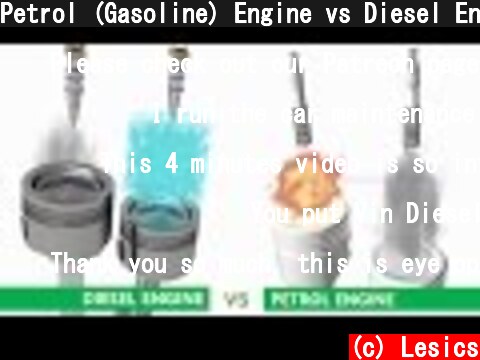
(c) Lesics Help us to make future videos for you. Make LE’s efforts sustainable. Please support us at Patreon.com …
Please check out our Patreon page and extend your support https://www.patreon.com/LearnEngineering
I run the car maintenance Youtube channel in Korea. I’m always learning such a great ideas on your channel. I hope we have a chance to be together. Thank you.
This 4 minutes video is so informative than my whole curriculum in school 😆😆
You put Vin Diesel in a petrol car to make it fast and furious.
Thank you so much, this is eye opening. I’m learning a lot from this channel, it deserves a five star rating.
Hey there! Thanks a ton for the clear explanation and neat animations! Do you guys give permission for teachers in an Engineering college in India to use this video so as to help them better explain to the students how Diesel and S.I engines work?
This is easily one of the best YouTube channels. Thanks for all these amazing videos 👏🏼👏🏼👏🏼
Overall a good video, quite informative. Can you make one with more details and info, perhaps going into bore and stroke/torque v Bhp etc. Thanks.
Thanks for explaination 😀 Great video, simple and easy to understand. Exactly what I was looking for 🙂 Stamble across it accidentally and now I’m one answer closer to satisfing my curiosity 😛
This was awesome! Thank you! Great work! Keep at it!
*diesel in gasoline engine*engine: “i sleep”*gasoline in diesel engine*engine: “real sh**!”
My question is can I put diesel in my coffee to make myself more efficient
Thanks for the car engine videos. They’re very helpful. 🙂
Awesome video! Thanks and keep up with the good work!
It’s an amazing information for a UG engineer thank you I wish I like to get some more interesting information like this thank you
I have e-mailed you to see if we can use these videos in our training courses for HVAC, Power Production, Plumbing and Electrical apprentice classes.� Please reply to my email so we can work out the details.� Great videos on explaining engineering topics.� Thanks again, Seth Moening
I felt at 3:55 my soul was transcending. Like I had become a better version of myself after watching this video. Thank you for that Learn Engineering. I wouldn’t be who I was after this 4 minutes of life changing experience.
Can you guys also make a video on the Rotary Engine? And, also a video that compares both the reciprocating and rotary engines?
Petrol in a diesel will also kill the fuel pump as diesel is more oily in nature and lubricates the fuel pump
Man this just made my day to learn something new! Thank you!
The Fastest train ever built | The complete physics of it
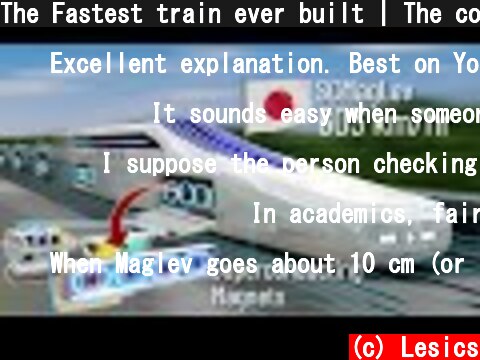
(c) Lesics Magnetically levitated trains are common nowadays. However, the MagLev train the Central Japan Railway Company developed …
Excellent explanation. Best on Youtube! Congratulations. It was my pleasure to collaborate with you guys.
It sounds easy when someone explains…. But that’s the difference…. Converting the knowledge into practical things…. Kudos to Japan 🇯🇵. They are master of it.
I suppose the person checking the tickets would be a Superconductor?
In academics, fairly simple, in practice, incredible feat of engineering.
When Maglev goes about 10 cm (or less), above the ground with a speed of approx. 600 kph (or anything above 100 kph), creates an enormous air cushion which reduced the needed electric current necessary for levitation. This phenomenon is not mentioned, but it should be.
Thirty years ago, I got on the first manned car on the Miyazaki test line. In the early stages of development, it was necessary to use a crane to inject liquid helium from an iron pan and replace it each time it was driven. Also, I was surprised that the hands of the clock stopped completely when I got on the train due to the influence of super strong electromagnetic waves. Currently, electromagnetic wave countermeasures have been strengthened and it is safer. The linear motor car is an innovative vehicle invented by Japan and is a catalyst for social change that has evolved over the long history of 50 years. There were many problems to be achieved. It was made possible by the hands of engineers who have worked hard to realize their dreams for many years. Praise the engineer
I genuinely love how the problems are solved in very simple ways like “The train doesn’t levitate without any movement yet it has to stop? Remember airplanes? Add retractable wheels!””Magnetic forces can be unbalanced on a side? Just connect them and they’ll sort themselves out!”
The SCMaglev system is cool, but I’m also impressed by the beauty and clarity of this video.
Much respect to the people who figured all this out.
How does it float: magnetsHow does it move: magnetsHow is it kept stable : MAGNETSHow does it generates power: *IT’S MAGNETS ALL THE WAY DOWN!*
The most important matter is japanese engineers had beenchecking the safety more over 20 years.
Salute to the Japanese engineers for such a masterpiece
Exploitation of the universe’s symmetries at its finest. Hats off to the engineers and technicians who made this train possible
it’s Insane how when it’s at its full speed it moves 603km/hr or 167.5 a second! basically every 5.97 seconds it goes a km or 8.95 seconds a mile these are the future of the world
As a electrician, I admire this on the highest level. Both theory and implementation. Brilliant.
Three words could summarize the MagLev solution: Elegance meets brilliance.
Hi, excellent movie and almost perfect explanation. However, it seems for me that one important thing was not well explained (Superconductive Electromagnets and its rule of operation). The viewer may get the impression that the SE works like a perpetual motion machine. Whereas the existence of any machine that performs continuous work without adding energy is impossible. It seems to me that the use of the SE was not to achieve “continuous current flow with a single energization” but rather to significantly reduce the power losses and the heating of the electromagnets during the current flow (current induced in SE coil by the field of external/track electromagnets).
Thanks for the great video!At the time of its opening, the speed of the Shinkansen was 200 km/h. The current speed is 350 km/h. The superconducting linear system is 603 km/h in tests. When it opens in 2027, the operating speed will be 500 km/h. However, after the opening of the line, they are aiming for a speed of over 600 km/h. Superconducting linear systems become more stable as the speed increases. The problem with the Shanghai linear line is that it can only rise one centimeter, so for safety reasons, the speed cannot be increased any further. Furthermore, the speed will decrease due to tolerant issues. In fact, it is no longer able to reach the speed it had when it first started.
I think this is similar to the highspeed train in Pudong Airport in Shanghai. That is a special “demonstration” train and there is a mini museum at the station that talks about similar thing to this video. It ran at 400+ km/h compared to typical around 300km/h of other highspeed trains in other parts of China. Love these highspeed rail as it is super steady and no turbulence like flying, simpler security check and no delay. Would be great if we have one across Canada major cities. Too bad that won’t happen anytime soon due to high capital cost. Alberta is talking about one that connect to Calgary airport and Banff.
Essentially: “What’s the solution to this problem posed by the magnets? More magnets!”
How do trains change the tracks?
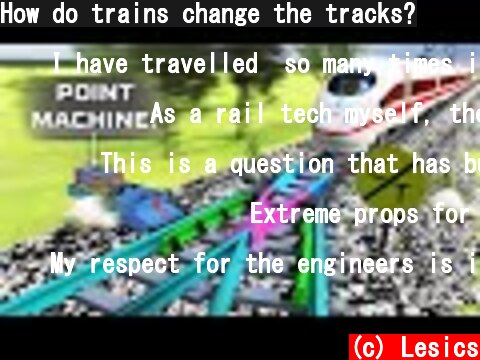
(c) Lesics Trains are able to change the their trajectory with just a slight adjustment of the rail track. This clever switching design is achieved …
I have travelled so many times in train….always think about this mechanism how it actually works?..this video explains everything….thank u…
As a rail tech myself, the presentation is guite good. The current mechanism would be more complex due to the need for high speed through the switches, the gap is handled with another switch. So the wheel is smoothly pass through at high speed. And also the steering mechanism which consists of several lever on the boogie and its cone shape wheel keep the train inside the track while making a turn. Its fascinating watching these awesome tech..
This is a question that has bugged me for years and is finally answered in a most elegant way. Thank you Sabin. You’ve earned a subscriber!
Extreme props for correcting flange mistake. That attention to deal is what I’m subbed for
My respect for the engineers is increasing day by day
Its amazing how even somewhat simple things like this have been invented by the human mind. Great progress and ingenuity here!
Great explanation with fascinating animations–almost real. I like that you ask questions once a while and make the viewer think how to solve design problems. There are 100s of lectures and videos, but students just passively watch.
It’s such a great feeling when you understand how some everyday things work that you wouldn’t have the chance to know otherwise!
Believe me or not, During my childhood I was so obsessed with trains that I understood this mechanism at a very young age, only by looking at the trains crossing the tracks.
I understood the bendable tongue track part at a young age but always wondered about the fixed tongue track part. I used to think at that small point, the train can easily detail and maybe we just have to live with that part being very high risk because we don’t have any better track changing mechanism. From this video I learnt about the rail check which make it basically impossible for the wheels to turn the other way and derail. It satisfied years old curiosity that I had since I was a child. Thank you!
I’m one of those operators in germany and I really like the video. It’s a really simple but well explanation for laypeople and at the same time 100% accurate!
It’s amazing to know that so many things take place in split seconds at very high speeds to let trains switch tracks safely. My respect for engineering is growing everyday with your videos!
I have always traveled in trains ….observing these small things but now i know their purpose. Very good animation and explanation. 👌👏
I absolutely love how easy this was to understand. Moreover, whenever a question popped into my head, for example, about the crossing section being without gaps, the video continues to smoothly transition into explaining that without overburdening the viewer with all the information at once.
Great video and content, thank you! I was aware of the basic concept, but the extension to smoothen the ride over the gaps, the check rails and the fact that and why the tongues are shortened are ingenious new learnings. Kudos!
This is a very informative video. by watching this video I have cleared a lot of concepts about turning of trains on the crossing point. thank you very much Lesics for making this awesome video.
Even if you don’t understand English, you can understand it by looking at the schematic diagram. Very detailed, thank you
Great video, I never thought rail tracks would be so interesting!
I’ve always loved these railway mechanics and how they worked, but I’ve never had the opportunity to see them in real life, let alone see them so beautifully animated. These are amazing! I hope you can produce some more stuff to do with railways (maybe funiculars or cog-railways? It’d be even cooler to see historic wooden/gravity railways as well!)
Simply and effectively explained the concept in a real quick. Thank you for the effort Lesics.Keep uploading great content like this…Cheers!..
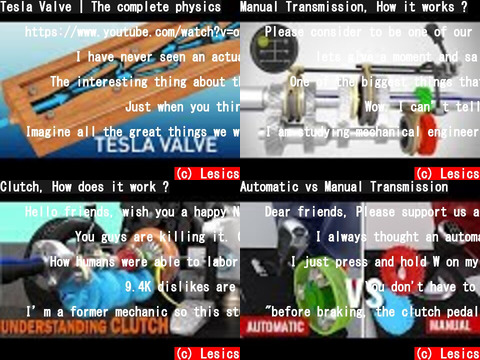











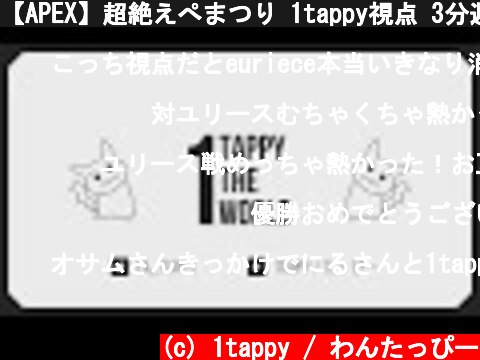

![岡田斗司夫 [切り抜き] 編集ちゃんねる(Youtube 動画 pick up)](https://imitoha.com/c/imgc/UCwfyW7i8kAFUj8_tSSDT_PA/-a-input.jpg)









コメント